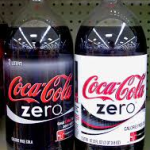
Many people are surprised to find out how hot and muggy it can get in Minnesota. With temperatures of 90+ degrees and humidity levels of “AreYouKiddingMe”, it can get quite uncomfortable here. I also spent some time in the south when I was in the Navy. I can’t imagine dealing with 110+degrees, day after day.
In case you haven’t guessed, I don’t like the heat. I don’t tolerate it well. A/C is an easy fix, but what if you have to be outdoors, or if for some reason A/C isn’t available? Here are some tips for staying cool in the heat.
Clothing
Wear loose fitting, light colored clothing.
It might sound counterintuitive, but wear long sleeve shirts and a hat. The sun directly on your skin will heat you even more.
Wear clothes made of cotton as it wicks heat away from your body. This is the reason the phrase “Cotton Kill” exists. When the phrase is used, it’s usually in cold climates.
If you wear a hat, get it wet and put it back on. A bandana can work for this as well.
Liquids
In hot weather, you need to increase your liquid intake. Don’t wait until you’re thirsty. When you’re active, you should be drinking 16-32 ounces of water an hour.
If your urine is anything but clear, you are dehydrated and need to rehydrate ASAP.
Avoid beverages containing caffeine as it promotes dehydration.
Water is a great source to stay hydrated, but many people don’t like water. There are additives such as powdered Gatorade that can flavor water and add electrolytes at the same time.
Put a water bottle in the freezer. When you go outside, take it with you. As the ice melts, you’ll have cold water to drink.
Food
Avoid using the stove, as it will just add more heat.
Eat cold foods; fruits and vegetables are a good idea.
Eat smaller meals but eat more often. The larger the meal the more metabolic heat your body produces to digest it. The same applies to drinking very cold water; it can actually heat you up because your body quickly reacts to warm the water to core temperature.
Eat copious amounts of ice cream. (Sorry about that, the little kid in me took over for a second.)
The Body
The body radiates heat from the head, hands and feet. Getting these areas wet will aid in cooling.
When I was in the Navy, on a cruise to the Gulf, they told us to eat more salt on our food, to help the body retain water. It’s true that we lose salt and minerals when we sweat. These salts and minerals need to be replaced. A sports drink will often work. Check with your doctor before going this route.
If outdoor work must be done, do it in the morning or evening. Avoid being out in the sun in the hottest part of the day.
Put a bottle of lotion in the fridge. Squirt some on and rub it into hands and feet. (I have never tried this, but it sounds like a decent idea.)
By placing a cool water bottle between your upper thighs or in your armpits, you will cool the blood. Don’t use ice cold as this could be a shock to your heart.
A similar principle is to get a bandana wet with cool water and wrap it around your neck, head or wrists.
Take frequent cool showers or baths.
Use a Chillow ® Pillow cooling device.
The Home
If you have a basement, the temperature there is often 10-15 degrees cooler. My home is a four level split. I would say each level is at least 5 degrees cooler than the one above it.
Keep your curtains or blinds drawn. If possible, have the outside of the blinds or curtains be light in color. This will reflect heat back outside. Dark colors will increase the temperature. This would be a good idea in the colder times of the year.
I have not done this but have heard that it works; hang a damp sheet in place of your drapes. To go with the drapes suggestion from above, use a light colored sheet.
Another thing that I have heard of but haven’t tried is spraying your roof with water. The heat evaporates the water, leaving the roof cooler. Here are several other passive cooling techniques.
Don’t Forget Your Pets
Keep plenty of cool water available.
Make sure they have shade available to lie in.
Some of our dogs love chewing on ice cubes.
Please click here to vote for Prepared Christian as a top Prepper site!
If you liked this article please think about sharing it on the social media listed below, thanks!







